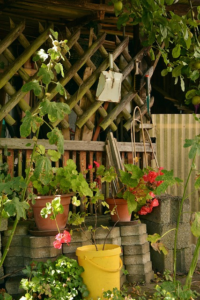Hay Sheds: Adapting to Wagga Wagga’s Unique Climate Challenges
Farm Sheds Wagga Wagga are designed to withstand extreme climate variations, protecting crops and equipment. Historically adapted to local conditions, these sheds blend traditional aesthetics with modern construction methods using steel frames a…….
Farm Sheds Wagga Wagga are designed to withstand extreme climate variations, protecting crops and equipment. Historically adapted to local conditions, these sheds blend traditional aesthetics with modern construction methods using steel frames and weather-resistant materials. Strategic design incorporates ventilation, larger overhangs, and reinforcement against harsh winds, rain, and heat, ensuring their durability and the region's agricultural resilience. Efficient farm shed management improves operational efficiency and productivity for Wagga Wagga farmers.
In the heartland of Australia, Wagga Wagga faces distinct climatic challenges that demand robust solutions. This article explores how traditional hay sheds have evolved to meet the region’s unique weather patterns, transforming from historical structures to modern farm management essentials. We delve into the design, construction techniques, and adaptations that ensure these Farm Sheds Wagga Wagga remain standing strong against extreme conditions, while enhancing efficiency on local farms.
- Understanding Wagga Wagga's Unique Climate Challenges
- Traditional Hay Shed Design: A Historical Perspective
- Materials and Construction Techniques for Durability
- Adapting Farm Sheds to Extreme Weather Conditions
- The Role of Hay Sheds in Modern Farm Management
Understanding Wagga Wagga's Unique Climate Challenges
Wagga Wagga, nestled in the heart of New South Wales, boasts a unique climate that presents both opportunities and challenges for its residents and farmers. The region experiences hot summers with temperatures often exceeding 30°C (86°F), followed by mild to cold winters where lows can dip below 5°C (41°F). This dramatic seasonal shift is characterized by distinct dry and wet periods, making it imperative for farmers to have structures that withstand these varying weather conditions.
The harsh sunlight during summer and frequent rainfall in winter necessitate robust and well-designed farm sheds in Wagga Wagga. These structures must not only protect crops and equipment but also be built to endure extreme temperatures and heavy precipitation. Farm sheds designed specifically for the Wagga Wagga climate consider these challenges, ensuring farmers have reliable storage solutions that contribute to their overall success and resilience.
Traditional Hay Shed Design: A Historical Perspective
The traditional hay shed design in Wagga Wagga has evolved over centuries, reflecting the region’s agricultural heritage and challenging climate. Historically, these structures were designed to protect crops from harsh weather conditions, including intense sun and strong winds—features that remain pertinent today for Farm Sheds Wagga Wagga. The standard layout often includes a slanted metal roof and sturdy wooden walls, constructed using locally sourced materials. This design allows for effective ventilation, preventing the buildup of heat and moisture that could damage stored hay.
The historical significance lies in the community’s ingenuity in adapting to their environment. These hay sheds became not just agricultural structures but an integral part of the region’s identity. Their rustic charm and functional design have endured, inspiring modern versions that blend traditional aesthetics with contemporary construction methods, catering to both aesthetic preferences and practical needs for Farm Sheds Wagga Wagga.
Materials and Construction Techniques for Durability
When constructing farm sheds in Wagga Wagga, choosing the right materials and construction techniques is paramount for ensuring durability against the region’s unique weather conditions. Local climates, like that of Wagga Wagga, often demand robust structures capable of withstanding frequent temperature extremes, high winds, and occasional severe storms.
For Farm Sheds Wagga Wagga, steel frames and durable, weather-resistant materials such as colorbond roofing and walls are ideal choices. These materials offer superior strength and resilience, protecting valuable farm equipment and stock from the elements. Proper construction techniques, including secure fastenings, sealed joints, and reinforced corners, further enhance the shed’s longevity. Such considerations ensure that these structures stand firm against Wagga Wagga’s weather challenges for years to come.
Adapting Farm Sheds to Extreme Weather Conditions
In regions like Wagga Wagga, where extreme weather conditions are a regular occurrence, adapting farm sheds becomes an essential part of sustainable farming practices. These resilient structures must withstand harsh elements such as intense sun, heavy rainfall, and even snow during winter. The traditional design of farm sheds often incorporates clever solutions to cater to these challenges. For instance, larger overhangs provide shade during hot summers, while adjustable ventilation systems help regulate temperatures.
For areas prone to severe storms, reinforcing the shed’s frame with stronger materials and adding robust doors and windows is crucial. Many farmers in Wagga Wagga opt for metal or concrete structures that can resist strong winds and flying debris. Additionally, implementing water-tight seals and durable roofing materials ensure that farm sheds remain dry during heavy rainfall, protecting valuable machinery and crops from damage. These adaptations not only safeguard the property but also contribute to a more resilient agricultural sector ready to face the unpredictable Wagga Wagga weather.
The Role of Hay Sheds in Modern Farm Management
Hay sheds have played a pivotal role in modern farm management, especially in regions like Wagga Wagga known for its varying weather conditions. In the face of unpredictable climates, these structures offer much-needed protection for hay and agricultural equipment. With the right design and construction, Farm Sheds Wagga Wagga can withstand harsh winds, intense rainfall, and even extreme heat, ensuring that valuable resources remain safe and intact.
Moreover, efficient farm shed management contributes to overall operational efficiency. Strategically located storage spaces allow farmers to easily access and manage their hay supplies, streamlining harvesting and distribution processes. This, in turn, enhances productivity by reducing time wasted on locating and organizing resources during peak farming seasons.
Hay sheds, an integral part of Wagga Wagga’s agricultural landscape, are not just structures but adaptive solutions to the region’s unique climate challenges. From traditional design perspectives to modern construction techniques, these barns have evolved to withstand extreme weather conditions. Today, they play a pivotal role in efficient farm management, offering protection for vital resources while showcasing the ingenuity of local farmers. Understanding and preserving this architectural heritage is essential for the continued success of Wagga Wagga’s farming community, highlighting the enduring significance of farm sheds Wagga Wagga.







